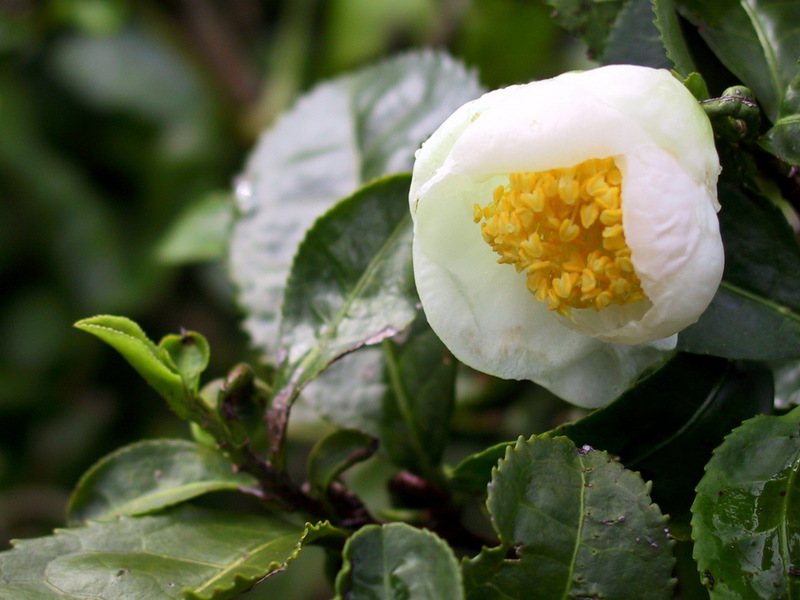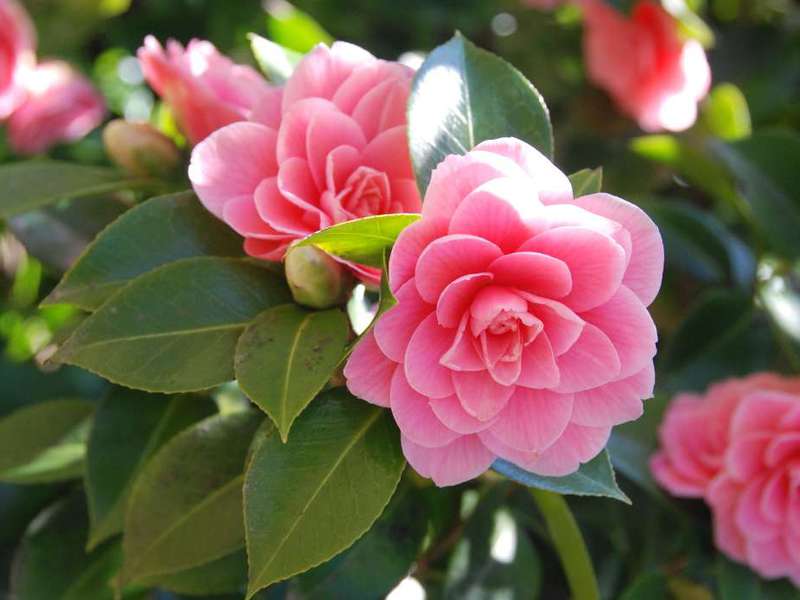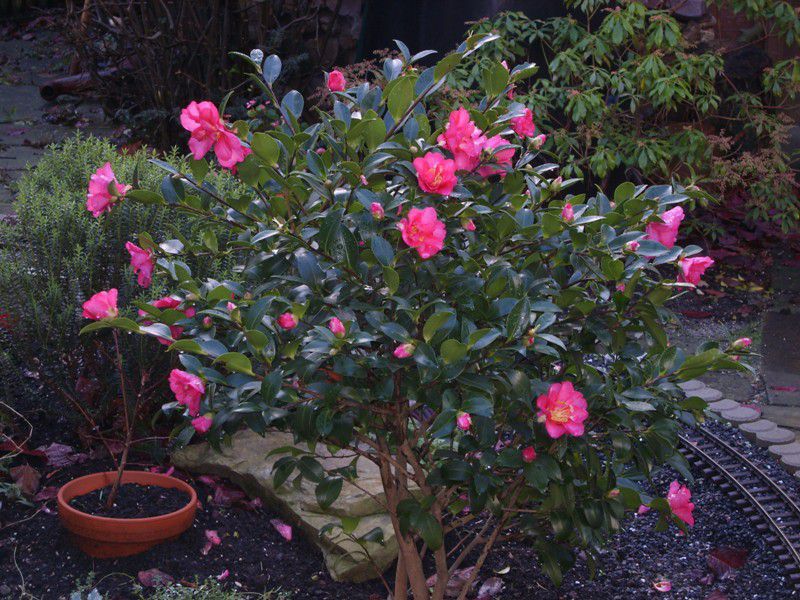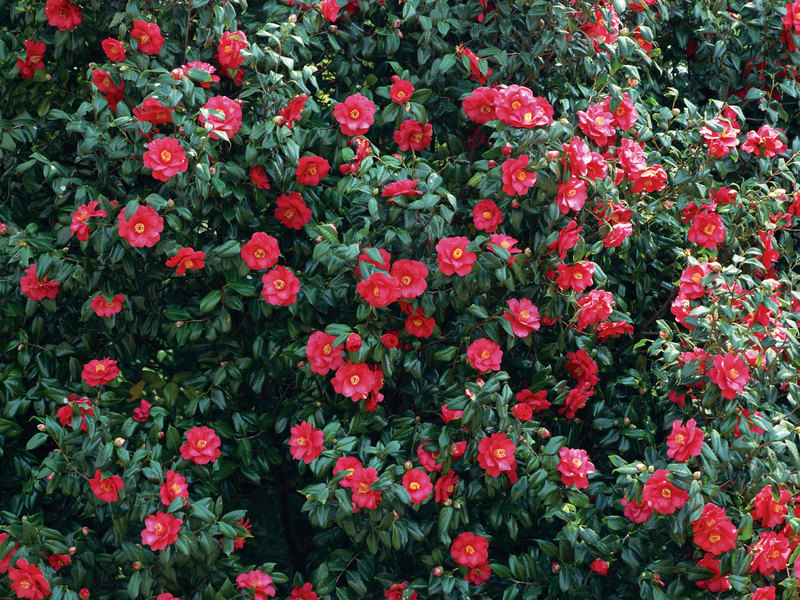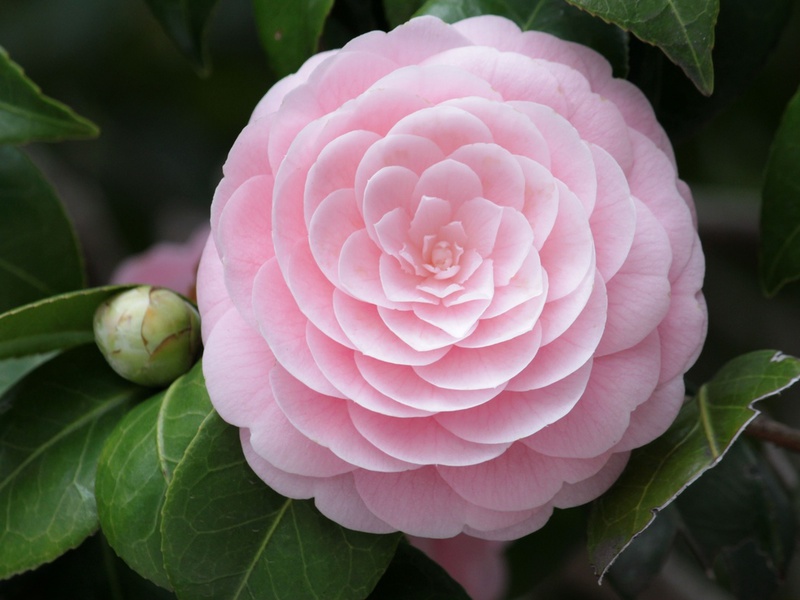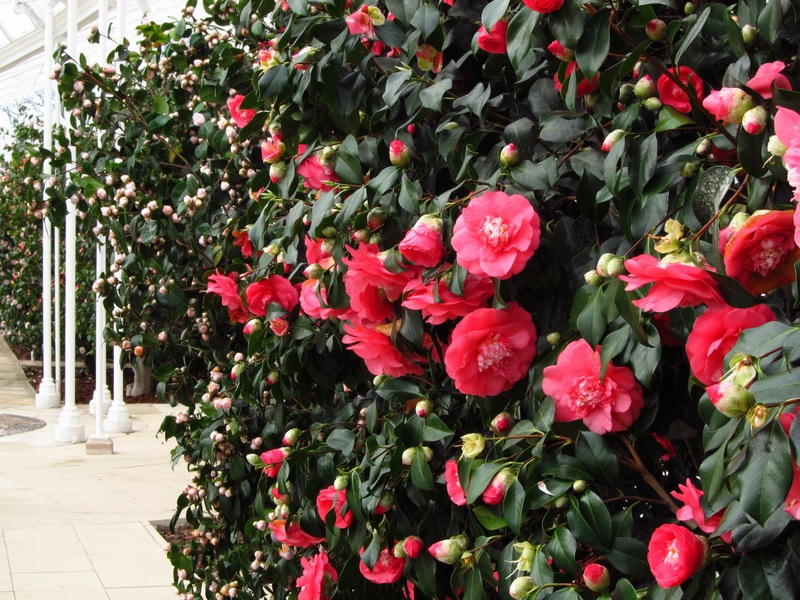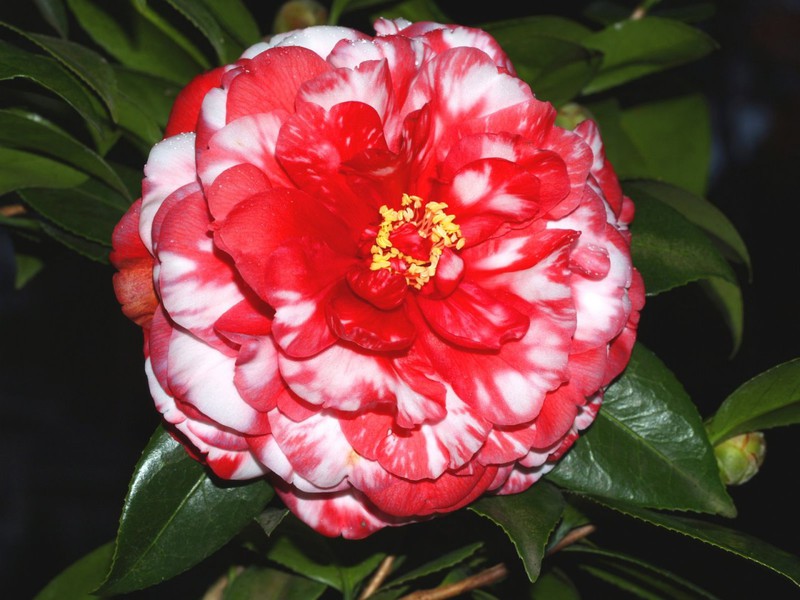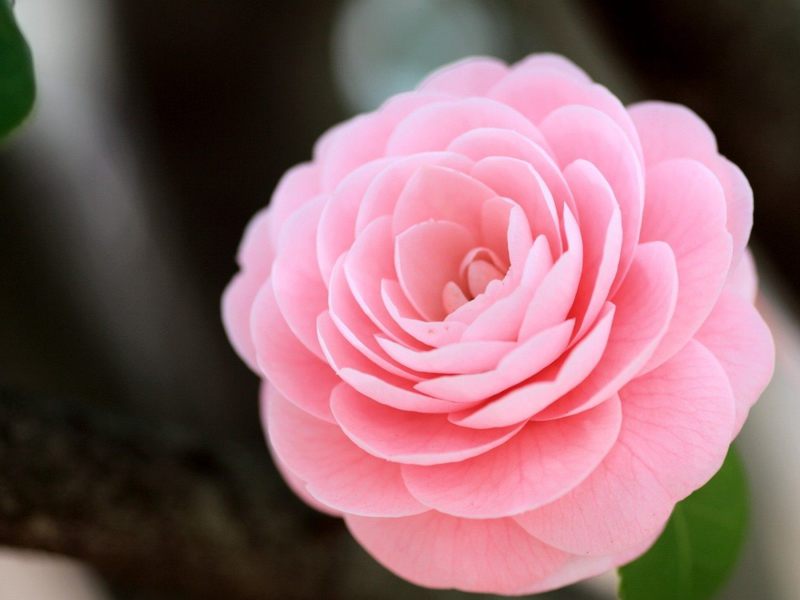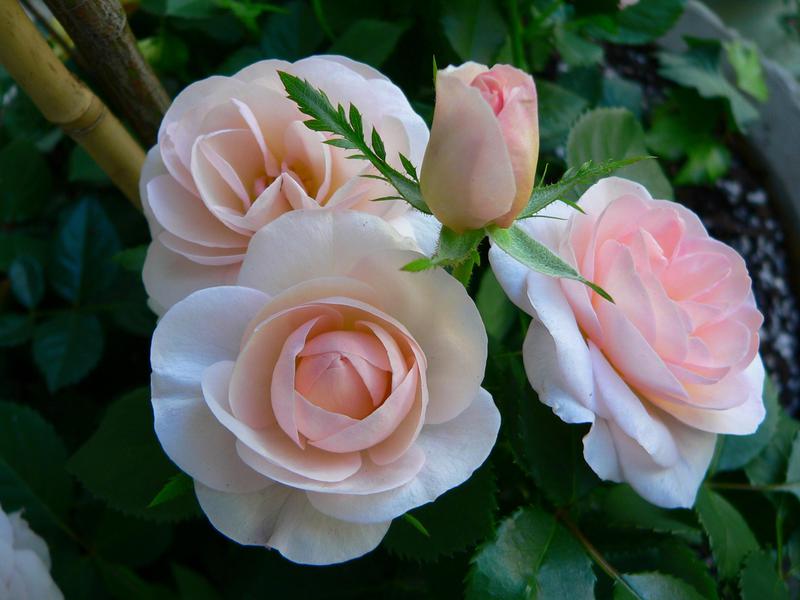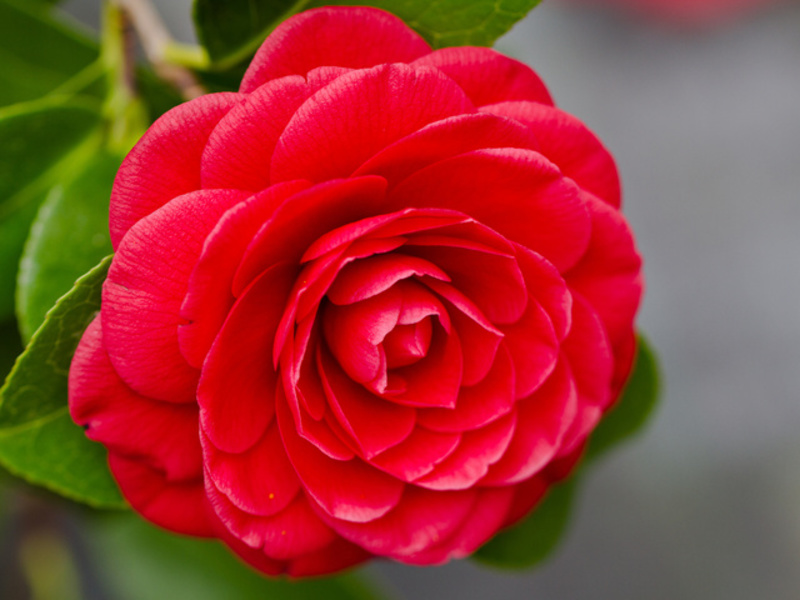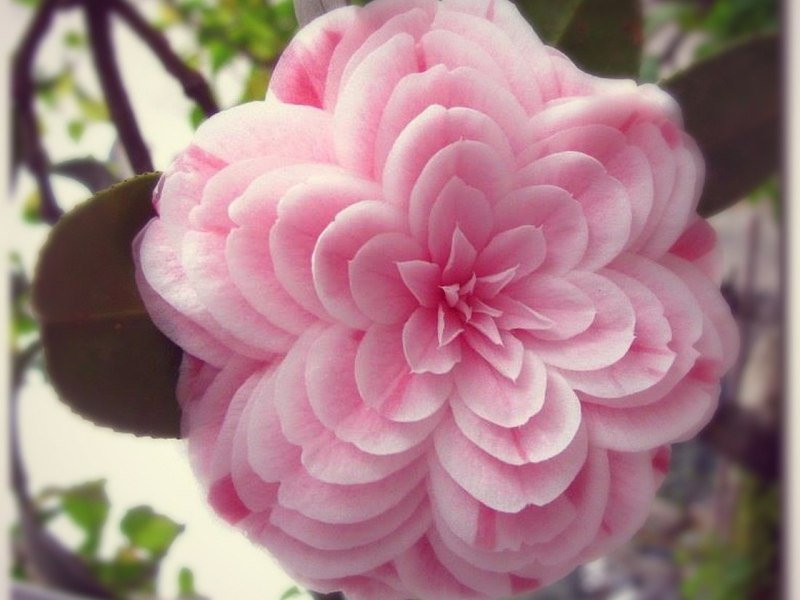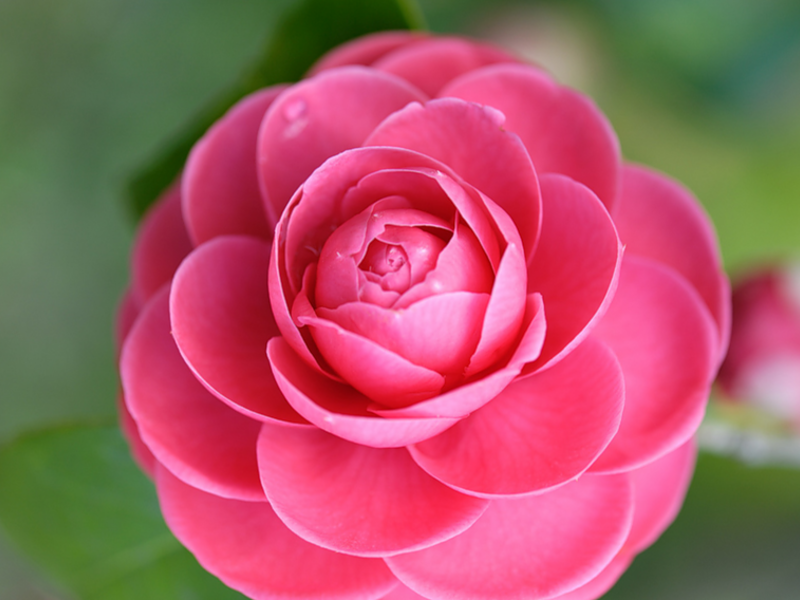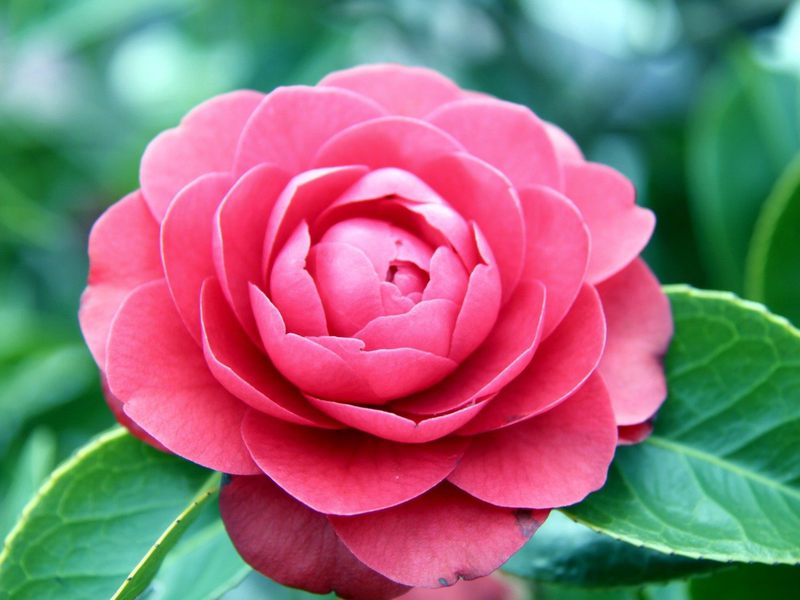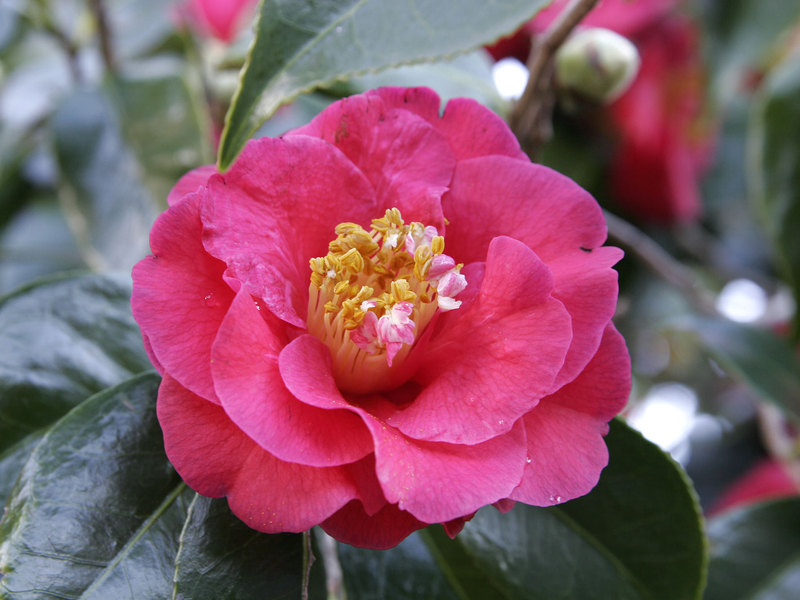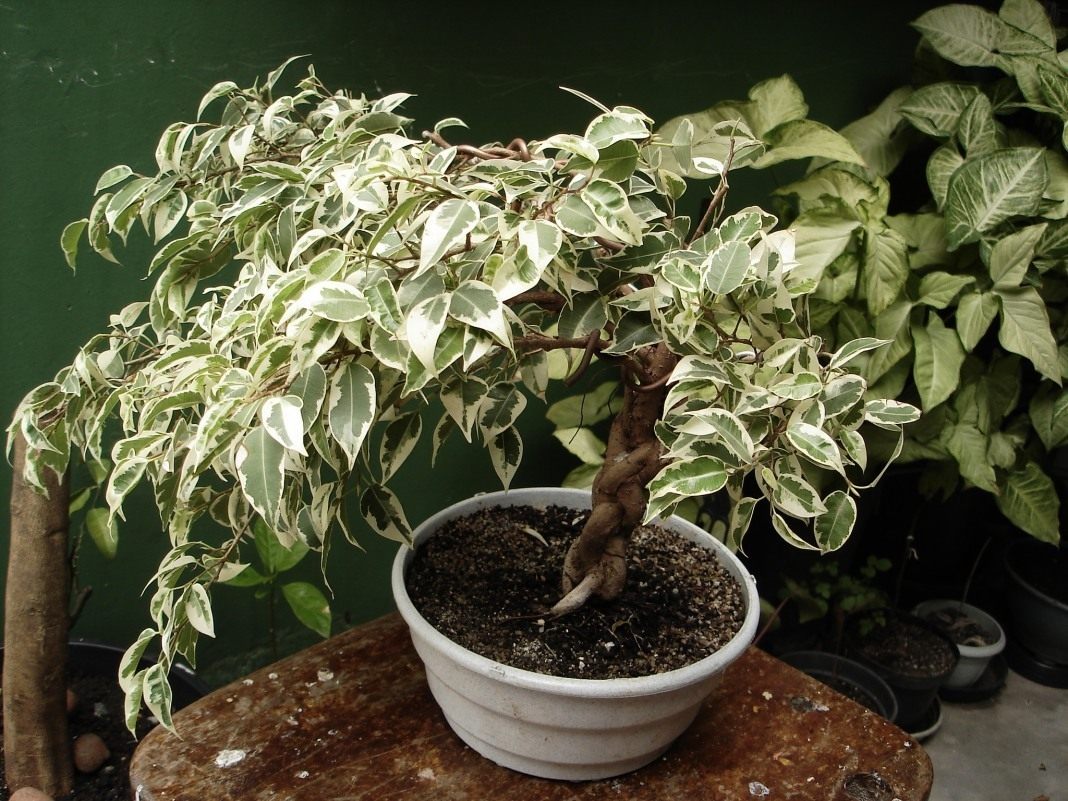The ornamental plant camellia is an evergreen shrub that grows naturally in China, Vietnam and Japan. Its dark green shiny leaves adorn the plant all year round. However, during the flowering period, the most charming period of the camellia's life begins. At this time, the bushes are covered with exquisite flowers that closely resemble roses. In warm climates, the plant can be grown in gardens. With proper care, camellia grows and blooms well at home.
Content
Description, types and photos of camellia
Depending on the type of shrub plant in height can reach from 3 to 12 meters... The glossy leaves of the plant are oval in shape. At the ends, they are blunt or sharp. Large single camellia flowers in diameter can reach from 5 to 15 cm. They consist of five petals and many stamens. The color of the petals can be red, pink, white. There are also bicolor petals with various stains, spots, dots or specks. Each flower of the plant blooms for a month.
Popular types of camellia
When grown at home, the most three types of plants are popular:
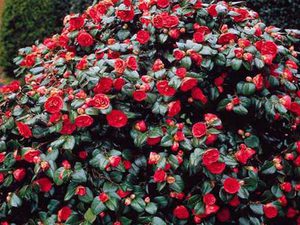 Camellia Miyagi or mountain is a shrub that grows up to 3-5 meters in height. The plant is distinguished by dark green ovoid or elliptical leaves, glossy above and pubescent below. Leaves serrate at the edges grow up to 3-7 cm in length. Red, pink or white simple mountain camellia flowers reach up to 7 cm in diameter. They can be single, or collected in two or three. The shrub blooms from November to January.
Camellia Miyagi or mountain is a shrub that grows up to 3-5 meters in height. The plant is distinguished by dark green ovoid or elliptical leaves, glossy above and pubescent below. Leaves serrate at the edges grow up to 3-7 cm in length. Red, pink or white simple mountain camellia flowers reach up to 7 cm in diameter. They can be single, or collected in two or three. The shrub blooms from November to January.- Japanese camellia has various forms, which differ in the arrangement of petals, size, color and doubleness of the flower. Japanese shrubs can grow up to 12 meters in height. Their ovoid or elliptical glossy leaves reach up to 5-10 cm in length. They are pointed at the edges. Flowers of the Japanese camellia have a diameter of 4 cm, and are collected in several pieces. Flowers of garden varieties are larger. They can grow up to 7-12 cm. The plant blooms from December to April. Japanese camellia blooms at home at temperatures no higher than 12C. In greenhouses, it can even bear fruit.
- Camellia chinensis or tea bush is an evergreen shrub with spaced branches. It can grow up to 10 meters. Its leaves can be elongated-oval, oval or alternate. They are light green below, dark above. The width of the leaves reaches 4 cm, the length is up to 5-7 cm. Single fragrant flowers of the tea bush, 2-4 in each, sit in the leaf axils. The calyx consists of rounded sepals. The yellow-pink petals accreted at the base fall off immediately after flowering. The fruit looks like a woody boll. The Chinese camellia blooms from August to late autumn.
Features of growing camellia at home
Indoor camellias require certain growing conditions and proper care.
Temperature and humidity
Camellia refers to short day plants... Only 12 hours of daylight hours will be enough for the establishment and development of flower buds. However, at this time it is required to monitor the room temperature:
- The temperature should be within 18C-20C. Camellia will not bloom at lower temperatures.
- If the daylight hours lasts less than 12 hours, then the temperature will need to be lowered to 8C-10C to lay the kidneys.
- Camellia blooms in winter from December to February. During this period of time, it must be kept at an air temperature of 8C to 10C.
If the room is too warm, then the buds will begin to fall off the bushes, flowering may come ahead of time, the quality of flowers will deteriorate.
When caring for camellia at home, you must ensure that there is high humidity in the room.
Plant requires regular spraying... For this, water must be separated and have room temperature. If there is no settled water, then it can be boiled and cooled. During flowering, spray the plant carefully. Water should not come into contact with flowers.
To increase the air humidity, the flower pot can be placed on a pallet with wet peat or expanded clay. A specially purchased air humidifier will also have a good effect on the development of the plant.
Lighting
Camellia needs a bright place:
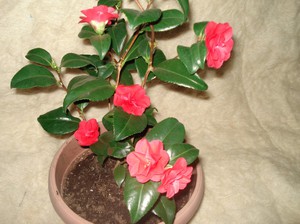 the flower will feel good on the eastern and western windowsills;
the flower will feel good on the eastern and western windowsills;- a bush located at the northern windows or in the back of the room will not have enough light for normal growth;
- if the plant is placed by a window facing south, then the flower will need shading from direct sunlight at lunchtime.
In order for the crown on the plant to grow equally from all sides, and the bush turns out to be even, from time to time it must be turned in different directions towards the light. In this case, in no case should you change the position of the bush during budding and flowering. A disturbed plant can shed its buds.
In the warm season, camellia can be put on the balcony, loggia or in the front garden in the open air. In this case, the plant must be protected from direct sunlight.
Watering and fertilizing
Camellia should not be poured, but it is recommended to water it regularly and abundantly. Watering is done only after the top layer of the soil has dried.
If the substrate is dry, the plant will begin to lose leaves. In winter, camellia is watered very carefully. If the substrate turns sour, the buds will begin to fall off and the leaves will turn brown.
Throughout the year, the camellia needs to be fed every three weeks. special mineral fertilizers... They need to be diluted at the rate of 1 gram of fertilizer per 1 liter of water.
Transplant and soil for camellia
When caring for young bushes, they need to be replanted annually. Older plants that bloom every year are transplanted every two years. In order for the bushes to grow better, it is recommended to pinch the tops of the shoots after transplanting.
The transplant is done in the spring. The soil must be acidic... Its composition may be as follows:
- two parts of leafy or heather land;
- two parts of peat;
- one piece of turf land;
- one piece of sand.
Drainage must be poured into the bottom of the pot.
Pests and diseases
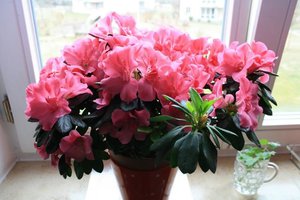 The most serious plant disease can be root rot, formed as a result of too low temperatures or waterlogging of the soil. In this case, the camellia needs to be urgently transplanted into breathable soil. By reducing watering, the plant can very rarely be saved.
The most serious plant disease can be root rot, formed as a result of too low temperatures or waterlogging of the soil. In this case, the camellia needs to be urgently transplanted into breathable soil. By reducing watering, the plant can very rarely be saved.
Brown spots on the leaves are signs of phylostictosis. The disease appears due to high humidity. Treatment is carried out by treating the leaves with copper sulfate. The humidity in the room decreases, the affected leaves are removed.
A spider mite, aphid or a scale insect can start on a room camellia.If they are found, the plant should be urgently treated with summer oil emulsions, soap solution or chemicals.
Reproduction of camellia
The plant reproduces in three ways:
- Cuttings.
- Seeds.
- Vaccination.
Propagation by cuttings
In January and July, decorative camellia varieties can be propagated by not yet stiffened apical cuttings. For this, cuttings with 3-5 leaves 6-8 cm long are cut off, and soaked in a solution of heteroauxin. The planting material is planted in boxes filled with peat and sand (1: 1). The rooting temperature should be between 20C-23C.
Caring for cuttings is to regularly sprinkle them and water the soil. After about two months, the roots will sprout, and the cuttings can be plant in separate containers, the diameter of which should be about 7 cm. At first, young plants are watered abundantly, and after rooting - as needed.
Sowing seeds
When growing camellia from seeds, the characteristics of varieties may be lost. However, the seeds sold in specialized stores retain such signs.
Seeds are sown in boxes at a distance of 5-7 cm. Seedling containers covered with glass or foil should be placed in a bright, warm place. After two real leaves appear on the seedlings, they will need to be sorted out into separate pots.
Reproduction by grafting
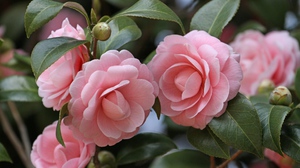 Some varieties of camellia root poorly when cuttings. In this case, they can be in January, propagate by vaccinations, choosing for this the upper parts of the shoot with well-developed buds.
Some varieties of camellia root poorly when cuttings. In this case, they can be in January, propagate by vaccinations, choosing for this the upper parts of the shoot with well-developed buds.
Grafts kept at 20C will germinate in about two months. Caring for them consists in maintaining a comfortable temperature and humidity for them, watering and spraying. In addition, when growing a young plant, you need to cut off the shoots and prevent burns on the leaves.
After a year, the bushes are transplanted into separate containers with a diameter of 9 cm. In the third year, pots with a diameter of 11-14 cm are prepared for plants. The soil should consist of heather and leafy soil, turf, peat and sand (2: 2: 2: 2: 1). Best young bushes transplant by transshipment... In this case, the roots will not be damaged and the plant will quickly take root.
Camellia is famous not only for its beautiful flowers, but also for its use in pharmacology and medicine. Essential oils are extracted from its leaves, which have an antiseptic, anesthetic and tonic effect. And the flowers of the Chinese camellia can be brewed and you can drink delicious tea.
